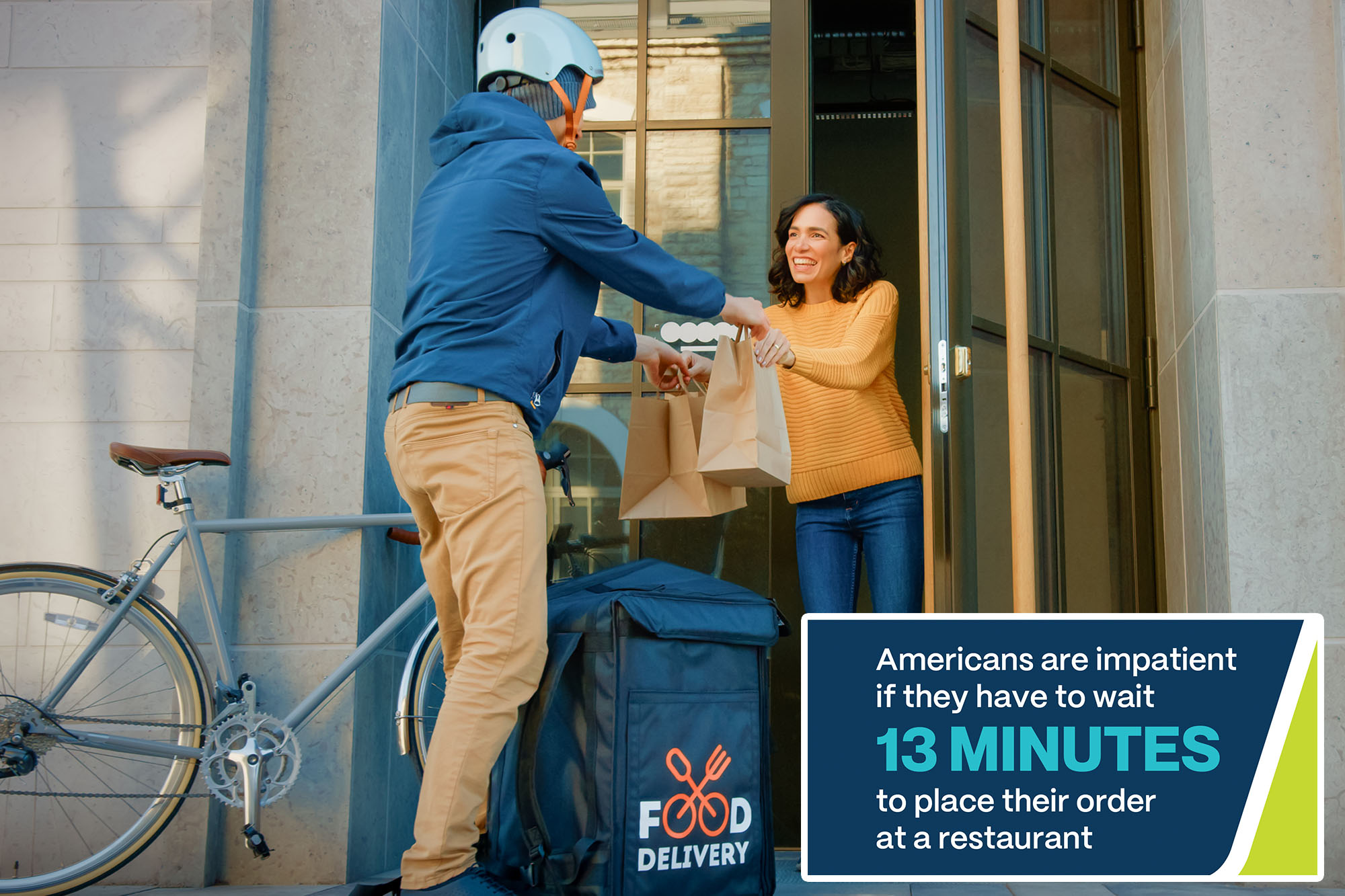
It takes less than 30 minutes for the average American to get frustrated waiting for food to arrive after placing an order for delivery, according to a new study.
A survey of 2,000 American adults looked at Americans’ patience levels when it comes to small everyday annoyances and found that if the restaurant is within a 10-mile radius, they start to get impatient within just 29 minutes.
This is also the same amount of time respondents think it should take them to prepare a meal from start to finish at home.
The survey also found that from the moment they walk into a restaurant, 21% are willing to wait just 10 minutes or less to be seated.
Once seated, Americans take an average of just 13 minutes before impatience sets in to order, and after ordering, it takes just another 17 minutes before they’re worried about the food arriving.
Just over seven in 10 (71%) describe themselves as patients, but 55% are even likely to get in another line if there are more than three people in front of them when they’re at the grocery store.
Almost half (47%) are willing to pay extra for faster delivery when shopping online.
About a third (30%) will yield to the person in front of them at a stop sign just under 10 seconds before honking.
SWNS / Meals on Wheels America
Conducted by Talker Research on behalf of Meals on Wheels America, the survey went beyond impatience levels and wait times and sought to compare them to issues experienced by one of the most vulnerable populations, the elderly.
According to the results, 63% of Americans surveyed have a loved one over the age of 65 in their lives, and 48% of those surveyed worry about that person every day.
Along with health (63%), whether they are happy (43%) or lonely (31%) are some of the main concerns.
Others shared that they worry if their loved one is eating alone (12%) or if they know where their next meal is coming from (10%).
This underscores the fact that the small disruptions Americans face when compared to the challenges older adults face on a daily basis are not really comparable.
“Millions of seniors receive the services of our life-saving programs every day, but many older Americans are still waiting for nutritious meals and moments of connection,” said Ellie Hollander, President and CEO of Meals on Wheels America. “Government funding, private donations and volunteering have declined, while demand for services and costs have increased, forcing providers to further stretch their resources. One in three Meals on Wheels programs has a waiting list with an average wait time of three months.”
However, the results found that 10% of Americans didn’t think Meals on Wheels programs had waiting lists, and another 49% simply weren’t sure.
What nearly two-thirds (64%) do know, however, is that older people are more susceptible to feelings of loneliness and isolation.
“Older Americans can’t wait any longer. Our local programs already work in almost every community across the country, and they’re eager to do even more, but they desperately need more resources to do that,” Hollander said. “That’s why Meals on Wheels America recently launched a bigger and bolder plan to help End the Wait and make sure every senior who needs help gets it.”
Survey methodology:
Talker Research surveyed 2,000 Americans of the general population; The survey was commissioned by Meals on Wheels America and administered and conducted online by Talker Research between October 2 and October 4, 2024.
#long #food #delivery
Image Source : nypost.com